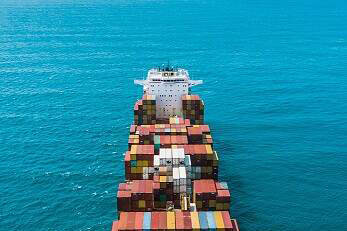Constanta Port Romania and Ukrainian exports: increasing concerns about capacity
Even before Russia announced the non-prolongation of the Black Sea corridor agreement beyond July 17 (agreed last year with the UN and Turkey) and which allowed Ukraine to export agri commodities from its Black Sea ports, experts announced their growing concerns about the capacity of the Romanian Constanta Port to handle the foreseen quantities forecast for the year 2023-2024.

So far, 47 freight and passenger rail links with Ukraine and the Republic of Moldova have been rehabilitated and work is continuing.
According to port operators, transit routes by rail or barge from Ukraine's Danube ports have matured during the 16 months of war.
The although slow progress on the logistics side has led to lower costs, making the Danube vital for Ukraine's agricultural exports. At the same time, high insurance premiums for ships leaving Odessa port and the cost of waiting in Istanbul for inspections, which can run up to $1 million for a medium-sized vessel, make a trip on the Constanta-Suez route a lot cheaper than one from Odessa.
"This combination of factors makes the Romanian route a significantly cheaper alternative not only for grain from western Ukraine, but also a competitive one for deliveries from central Ukraine," said a Ukrainian trader.
As a result, the port of Constanta could become even more overcrowded, regardless of the faith of the international agreement on Ukrainian grain exports via Black Sea ports, explains analyst Cezar Gheorghe of the consultancy AGRIColumn. "Although we are not in harvest season, the port of Constanta is choked," says Gheorghe. According to his data, the amount of goods from Ukraine entering Romania will be 50% higher this year compared to last year.
Between March 2022 and June 2023, Ukraine exported a total of more than 73 million tonnes of agricultural goods. Of these, 32.7 million were exported through the grain corridor and 40.2 million through solidarity lanes. During this period, 18 million tonnes of Ukrainian cereals and oilseeds entered Romania.
As for estimates for the period 2023-2024, it seems that Ukraine plans to transit through Romania a quantity of 27 million tonnes of cereals and oilseeds. This is a huge amount, given that Romania is also expected to export a total of 22-24 million tonnes, due to a promising harvest.
The situation is all the more serious as the Port of Constanta does not have the capacity to handle all these goods. It can handle only around 25 million tonnes a year, according to specialists, which causes bottlenecks and delays.
Delays are caused by insufficient infrastructure but also by the lack of an integrated digital system, say operators. The port authority says it is working on a connected system that will automate the flow of information in the port, but has not estimated when it will become operational.
"Things could get even more complicated because of the limited storage capacity of the port of Constanta," explains a Ukrainian analyst. The port has a storage capacity of two million tonnes, but the flows have to be strictly segregated for the certificate of origin.
Meanwhile, authorities in Bucharest are considering measures that would give Romanian farmers preferential access to the port of Constanta during the harvest season, which would restrict the flow of grain from Ukraine. Romania is one of the eastern European member states that has faced an explosion in grain imports from Ukraine, prompting the EU to introduce temporary trade restrictions.